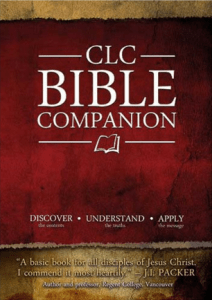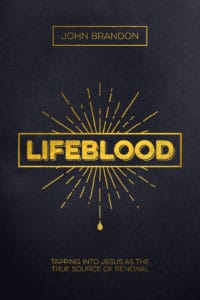From the CLC Bible Companion.
Jesus’ understanding of his mission and the events of his life reveal his unique relationship with God and his true identity as the Son of the Father.
“JESUS IS THE SON OF GOD”
The declaration of Jesus as the Son of God was central to the faith and preaching of the first Christians, and continues to be so to this day. Mark tells his readers at the beginning of his Gospel that the Jesus whose story he is about to recount is “the Son of God” (Mark 1:1). The first message preached by Paul after his encounter with the risen Jesus on the road to Damascus was that “he is the Son of God” (Acts 9:20). In 1 John, the confession that Jesus is God’s Son is seen as the key to the whole Christian life (1 John 4:15; 5:5,10,12). However, the first Christians did not invent this belief; it is grounded in the life, teaching and mission of Jesus himself.
BACKGROUND
Jesus’ disciples would already have been familiar with the term “son of God” from two main contexts.
The people of Israel knew that they had a special relationship with the true God. When God had rescued them from slavery in Egypt, he had sent a message to Pharaoh through Moses, saying, “Israel is my firstborn son. Let my son go so that he may worship me” (Exodus 4:22-23; see also Hosea 11:1). In the ancient Middle East, as in many places today, the firstborn son had a special status within family life: he enjoyed the closest relationship with his father and often spoke and acted on the father’s behalf. Among all the nations of the world, Israel was God’s firstborn son, enjoying his lavish love and blessing and being called to act on his behalf in the world (eg Deuteronomy 7).
Later, the king of Israel was also seen as the “son of God”, because of God’s promise to David in 2 Samuel 7:14. The king represented in one individual what the whole nation was supposed to be. Psalm 2, which was possibly sung at the coronation of kings in Israel, mentions the close relationship with God that the king enjoyed, as well as his special responsibilities to act on God’s behalf (see also Psalm 89:19-37). Of course, it soon became clear that neither the nation of Israel nor the king were fulfilling their responsibilities as God’s “son”. Passages in the Dead Sea Scrolls indicate that at least some Jews expected the coming Messiah to be the true “son of God”.
- Pharaohs, kings and emperors.
Israel was not the only nation to use the term “son of God” to describe their ruler. In the ancient Near East, both Egypt and Babylon also gave this title to their pharaohs and kings. For them, it highlighted the special relationship the king was thought to enjoy with the gods, and so underlined his authority to rule. Whereas in Israel the use of the term did not mean that either the king or the nation was in any sense divine (but merely a human representative of God), this distinction was not as clear for other nations, who thought that the gods might adopt heroic leaders as divine sons.
For instance, in the fourth century BC, Alexander the Great declared himself to be a son of the god Zeus, and expected actually to become a god after his death. He asked his subjects to worship him as divine during his lifetime! In the Roman Empire it was commonly believed that an emperor became a god at his death; his successor was then called a “divine son”, or a “son of god”.
This belief was inscribed on some Roman coins, which have been discovered by archaeologists. For instance, the penny that Jesus asked to see in Mark 12:13-17 was probably marked with the inscription “Augustus Tiberius Caesar, Son of the Divine Augustus”. The early Christians proclaimed Jesus to be the true “son of God” written about in the Old Testament. They did so in a world where the term was used as a political title for emperors who demanded worship. However, they also knew that Jesus had transformed the meaning of the term, because he was the Son of God in a new and unique way.
THE SON’S MISSION
In one of his parables, Jesus tells the story of a man who owned a vineyard. He leased the vineyard to some tenants and then went away for a long time. When it came to the harvest, he sent servants back to the vineyard to collect his share of the produce. However, the tenants attacked his servants and chased them away. Eventually, the man sent his own son, thinking the tenants would respect him. But instead they murdered the son, and so faced the owner’s judgement (Matthew 21:33-39). Jesus’ hearers knew from the Old Testament that the nation of Israel was the vineyard (see Isaiah 5:1-7; Psalm 80:8-18), and the Jewish leaders could tell that they were the tenants who were supposed to care for it (Matthew 21:45). The owner was, of course, God himself; his servants were the prophets who had been sent to warn Israel to produce a crop of righteousness for God (see John the Baptist’s message in Luke 3:8). In the parable, Jesus is the owner’s son: he has been sent after all the prophets to turn the tenants from their wicked ways and make the vineyard productive once more.
Just as the Old Testament background suggests, Jesus as the Son of God came to accomplish the Father’s work. The Son is the Father’s chief representative who can act with the Father’s authority. Peter recognised that Jesus was not just another prophet, but that he was “the Messiah, the Son of the living God” (Matthew 16:16) – Peter had recognized that Jesus had a unique role in bringing God’s plan to its climax. Jesus was the Father’s Son!
Sometimes people called Jesus the “son of David”, which is a reminder of God’s promise in 2 Samuel 7:14 that the great coming king in the line of David would be the son of God (eg Mark 10:47). In John 1:49 Jesus is declared to be both “the king of Israel” and “the Son of God”, showing the clear connection between these two terms. From the earliest days of his earthly life, Jesus was aware that he had been sent to work in his Father’s business, just as a firstborn son would be (Luke 2:49; John 8:42). To call Jesus “the Son of God” is a recognition that Jesus acts completely on his Father’s behalf (John 10:36-37), so that whatever he does, it is what the Father wants (John 5:19). As God’s Son, Jesus fulfils all God’s promises from the Old Testament (2 Corinthians 1:19-20).
THE SON’S RELATIONSHIP WITH THE FATHER
Jews have always been careful about the terms they use to speak to and about God. Although God’s personal name (in Hebrew, YHWH) was revealed to Moses in Exodus 3:14, Jews tended to avoid using it in case they broke the third commandment (see Exodus 20:7). In Jesus’ day, they used other less personal terms, such as “God”, “Lord”, “the Blessed One” (Mark 14:61), or simply “Heaven” (Mark 11:30).
Jesus, however, used the most intimate language to speak about his relationship with God. In the four Gospels, he consistently speaks of God as “Father” around 150 times (around 100 times in John’s Gospel alone). In the garden of Gethsemane, just before his arrest, Jesus prayed using the term “Abba”, which is an everyday Aramaic term meaning “Daddy” that expresses the closest relationship of love and trust between a child and his father (Mark 14:36). As the Son of God, Jesus has seen the Father (John 6:46), and so is able to make him known to others (Luke 10:22; John 1:18).
Just as Jesus trusts the Father, so the Father trusts Jesus as his Son to do his will (Matthew 11:27). At two key points in Jesus’ ministry, God’s voice is heard saying, “This is my beloved Son with whom I am well pleased”: at his baptism (Matthew 3:17; Mark 1:11; Luke 3:22) and his transfiguration (Matthew 17:5; Mark 9:7; Luke 9:35).
THE SON’S TRUE IDENTITY
Key aspects of Jesus’ life helped the first Christians to realise that he was the “Son of God” in a new and unique way.
Jesus was conceived by the power of the Holy Spirit of God, rather than by a human father (Matthew 1:18,20; Luke 1:35). Jesus also consistently spoke of how he had “come from the Father” (eg John 16:28). Whereas for other humans, birth is the beginning of life, Jesus’ birth was an incarnation – he had existed as the Son of God before his human birth. Unlike the pagan rulers, Jesus was not an adopted son of the gods, but the eternal Son of God.
- Recognition by Satan and demons.
Whereas Jesus’ true identity was hidden from his disciples during his earthly ministry, it was recognised by Satan (Matthew 4:3,6; Luke 4:3,9) and by demons (eg Luke 8:28).
- His resurrection and ascension.
Jesus was put to death because of his claim to be speaking and acting as the Son of God (see Luke 22:70-71). His resurrection was God’s confirmation that Jesus had spoken the truth about himself. Paul pointed to the resurrection as the revelation, or declaration, of Jesus’ true identity as the Son of God (Romans 1:4). After his resurrection, Jesus returned to the Father (John 16:28; 20:17) to be in the place of honour at his right hand (Acts 7:56; Hebrews 1:2-3).
The first Christians knew that Jesus had given them a new, intimate relationship with God (eg Galatians 4:4-6). As they made sense of this, they realised Jesus could only do this if he himself were God’s Son in a unique way – if he fully shared the same divine nature as his Father. When they looked back over his life and teachings, they saw that this was in fact what Jesus was all along. The term “Son of God” had been enriched and transformed. Jesus the Son is to be trusted and worshipped just like his Father.
 About The CLC Bible Companion The CLC Bible Companion is an all-in-one guide to the Bible that is both a comprehensive reference book and an exciting companion. Its goals for you are to: Know Jesus Christ, Discover the Contents of the Bible, Explore the Truth of the Bible, and Believe and Experience the Message of the Bible. The CLC Bible Companion is on special promotion for a limited time, you may purchase the CLC Bible Companion for $10.00 while supplies last. (retail price $29.99 for hardcover) To learn more about the CLC Bible Companion and purchase, please visit: https://www.clcpublications.com/deals-discounts/
About The CLC Bible Companion The CLC Bible Companion is an all-in-one guide to the Bible that is both a comprehensive reference book and an exciting companion. Its goals for you are to: Know Jesus Christ, Discover the Contents of the Bible, Explore the Truth of the Bible, and Believe and Experience the Message of the Bible. The CLC Bible Companion is on special promotion for a limited time, you may purchase the CLC Bible Companion for $10.00 while supplies last. (retail price $29.99 for hardcover) To learn more about the CLC Bible Companion and purchase, please visit: https://www.clcpublications.com/deals-discounts/
Download Free PowerPoint Resources for your Bible Studies:
Knowing Jesus 1
 About John Brandon: John Brandon is a well-known reporter and columnist for Inc. magazine, Fox News Network, Christianity Today, Relevant magazine, and many others. For ten years, he worked as a corporate manager in the Information Technology field. After 9/11, John’s employer (who became nervous about the world economy) fired him. At the advice of his wife, he became a writer and has since published over twelve thousand articles in seventeen years. Over ten million people have read his thought-pieces on leadership, productivity, mentoring, and technology for Inc.com. He lives in Minnesota with his wife, Rebecca, and has four children, two sons-in-law, and three grandchildren. This is his first book.
About John Brandon: John Brandon is a well-known reporter and columnist for Inc. magazine, Fox News Network, Christianity Today, Relevant magazine, and many others. For ten years, he worked as a corporate manager in the Information Technology field. After 9/11, John’s employer (who became nervous about the world economy) fired him. At the advice of his wife, he became a writer and has since published over twelve thousand articles in seventeen years. Over ten million people have read his thought-pieces on leadership, productivity, mentoring, and technology for Inc.com. He lives in Minnesota with his wife, Rebecca, and has four children, two sons-in-law, and three grandchildren. This is his first book. About Lifeblood: Lifeblood is what flows through us when we first find Christ; but as time goes on, we start to grow stale in our spiritual life. Not simply a how-to book, Lifeblood is about getting back to the basics of Christianity and making life-altering communion with Jesus possible every minute of the day. Tapping in to your lifeblood starts with you; but it will flow to your friendships, marriage and family, church, work, and even your community. Lifeblood is available for pre-order https://www.clcpublications.com/shop/lifeblood-tapping-into-jesus-as-the-true-source-of-renewal/
About Lifeblood: Lifeblood is what flows through us when we first find Christ; but as time goes on, we start to grow stale in our spiritual life. Not simply a how-to book, Lifeblood is about getting back to the basics of Christianity and making life-altering communion with Jesus possible every minute of the day. Tapping in to your lifeblood starts with you; but it will flow to your friendships, marriage and family, church, work, and even your community. Lifeblood is available for pre-order https://www.clcpublications.com/shop/lifeblood-tapping-into-jesus-as-the-true-source-of-renewal/
 About The CLC Bible Companion The CLC Bible Companion is an all-in-one guide to the Bible that is both a comprehensive reference book and an exciting companion. Its goals for you are to: Know Jesus Christ, Discover the Contents of the Bible, Explore the Truth of the Bible, and Believe and Experience the Message of the Bible. The CLC Bible Companion is on special promotion for a limited time, you may purchase the CLC Bible Companion for $10.00 while supplies last. (retail price $29.99 for hardcover) To learn more about the CLC Bible Companion and purchase, please visit:
About The CLC Bible Companion The CLC Bible Companion is an all-in-one guide to the Bible that is both a comprehensive reference book and an exciting companion. Its goals for you are to: Know Jesus Christ, Discover the Contents of the Bible, Explore the Truth of the Bible, and Believe and Experience the Message of the Bible. The CLC Bible Companion is on special promotion for a limited time, you may purchase the CLC Bible Companion for $10.00 while supplies last. (retail price $29.99 for hardcover) To learn more about the CLC Bible Companion and purchase, please visit: 


 About If by Amy Carmichael: Amy Carmichael questions whether we allow our doubts and disappointments to hinder our faith, or do we really know Calvary’s love? In a series of statements and common situations, a Christ-love of forgiveness and strength is meant to mend our hearts and encourage others, because of what He has already done. Purchase the book with a CD featuring words from If performed by Vanessa Libby, soprano soloist, and Alison Beck, pianist.
About If by Amy Carmichael: Amy Carmichael questions whether we allow our doubts and disappointments to hinder our faith, or do we really know Calvary’s love? In a series of statements and common situations, a Christ-love of forgiveness and strength is meant to mend our hearts and encourage others, because of what He has already done. Purchase the book with a CD featuring words from If performed by Vanessa Libby, soprano soloist, and Alison Beck, pianist.  About Amy Carmichael: Amy Carmichael was the eldest daughter of a large Christ-centered family in Millisle, Ireland. She was impressed at an early age that “nothing is important but that which is eternal.” This understanding proved to be the foundation for her service to the Lord among the mill workers of Ireland, the Japanese briefly, and then in India where she began her ministry to children in 1895 and where she remained until her death in 1951.
About Amy Carmichael: Amy Carmichael was the eldest daughter of a large Christ-centered family in Millisle, Ireland. She was impressed at an early age that “nothing is important but that which is eternal.” This understanding proved to be the foundation for her service to the Lord among the mill workers of Ireland, the Japanese briefly, and then in India where she began her ministry to children in 1895 and where she remained until her death in 1951.

